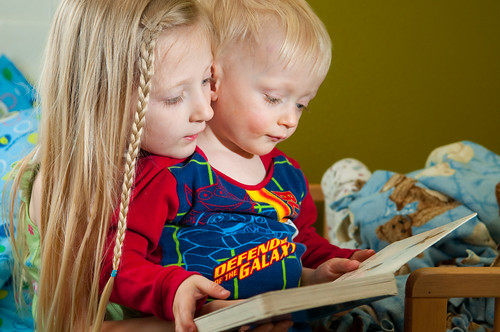 What's that??? A snoot. It essentially tunnels the light like spot light.
What's that??? A snoot. It essentially tunnels the light like spot light.I may have mentioned the use of one before, but I was introduced to it by reading Dave Black's page
So generally don't use it as the only flash. Here I used a flash pointed at the ceiling to get reflected light and then increased the power on the flash with the snoot on it to get a focused, directional light.

This next shot, I increase the light that was pointed at the ceiling to minimize the contrast in the lights.
 I am shooting these at about F4 and between 1/30 and 1/80 of a second with ISO between 100 and 200 in full Manual mode. I find that I generally get better results with 2 or 3 flashes when I go manual on cameras and manual power on the flashes.
I am shooting these at about F4 and between 1/30 and 1/80 of a second with ISO between 100 and 200 in full Manual mode. I find that I generally get better results with 2 or 3 flashes when I go manual on cameras and manual power on the flashes. For these next shots, I kept playing with the settings of the two flashes to even them out a bit. I find that even at the same power, the snooted flash gives a higher intensity, simply because it is not diffused or reflected, it is direct, and focused by the snoot.

 I like not having a shadow behind the subject... to avoid this, increase the intensity of the reflected light (or ambient light with the shutter time being longer) and don't place an object close behind the subject (in the plane of the snoot and subject -hope that made sense
I like not having a shadow behind the subject... to avoid this, increase the intensity of the reflected light (or ambient light with the shutter time being longer) and don't place an object close behind the subject (in the plane of the snoot and subject -hope that made senseSo, then it was time to try 3 flashes - I picked up a lightly used SB-800 a few months ago and am thrilled with it. Unfortunately they don't make them anymore. But they allow you to have an on-camera flash (I usually point it to the ceiling or wall to have reflected light) and still command the other flashes with the SB-800 (in other words, the SB-800 has commander (remote) mode and the two SB-600s I use are the slaves).
This final shot I was really happy with the balance of lighting. I have an SB-600 on a light stand behind the subject (so camera left) shot through a white umbrella at 1/16th power. I also have the on-camera SB-800 at 1/16 or 1/32 power, pointed toward the ceiling with a diffuser on it (just to bounce the light a little before it hits the ceiling)*** And finally the snooted flash is pointed directly at the faces and is also set at 1/16 power. I moved the flashed to be about 4-5 feet from the subject. Without photoshop on my work computer, I won't try a lighting diagram, but maybe I will add it later.

*** the diffuser looks like this

